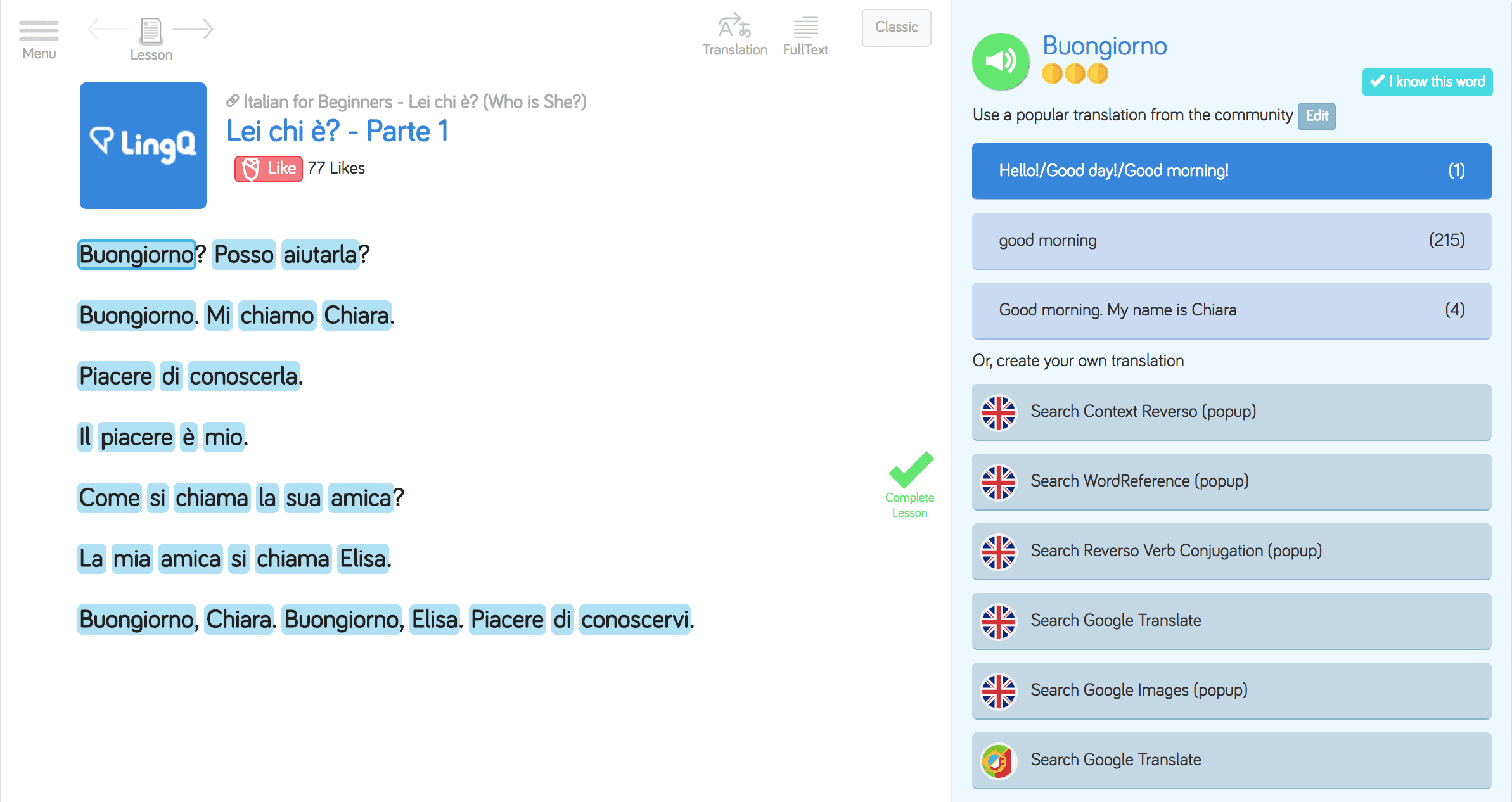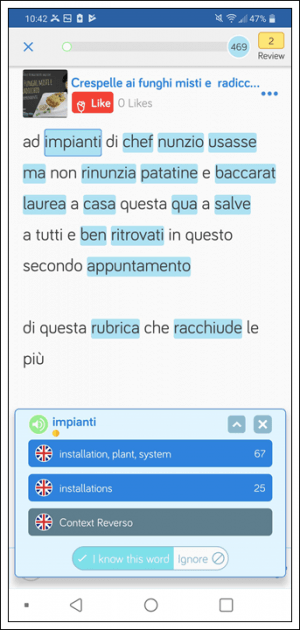Italian Prepositions Made Easy
A preposition (“una preposizione”) is a part of speech that links words and establishes connections between them. It is an important element of any language and usually is governed by many rules, not to mention the exceptions.
Do you know why it is correct to say “I’m in the car” but we have to change the preposition to say “I’m at the house”? Me neither. And yet, this is the proper way to say things. All languages are full of little traps like this and Italian is no different. Does it mean that Italian prepositions are difficult to learn? Not necessarily, but learning them correctly may require a bit of creativity. In this post I am going to discuss how to learn simple prepositions in Italian.
Italian Prepositions In Use
There are a few simple Italian prepositions and you need to learn in order to speak Italian well. Say hello to:
Di
“Di” means
– “of”:
un bicchiere di Coca-Cola – a glass of Coke
un gatto di Gianna – Gianna’s cat (= a cat “of” Gianna)
la gonna di cottone – cotton skirt (= a skirt made “of” cotton)
– “from”
essere di Varsavia – to be from Warsaw
Da
“Da” means
– “for”/”since”:
Vivo a Palermo da dieci anni – I have been living in Palermo for 10 years
Vivo a Roma da quando sono nata – I have been living in Rome since I was born
– “for” in terms of what an object is used for:
un costume da bagno – a costume for swimming (= a swimming costume)
– “from”
Vengo da Parigi – I come from Paris
A
“A” is used for:
– expressing a receiver of an activity, in this case it is translated as “to”:
Maria da il regalo a Marco – Maria gives a present to Marco
– indicating locations such as cities and other places, in this case it is translated as “in” or “at”:
Vivo a Firenze – I live in Florence
Luigi è a scuola – Luigi is at school
In
“In” usually means “in” (yay!):
Lui abita in Francia – He lives in France
Sono in giardino – I’m in the garden
Studi in silenzio – You study in silence

Con
“Con” means “with”:
Sei con i tuoi amici – You are with your friends
Lei era con un bambino – She was with a child
Mi piace la pasta con pomodori freschi – I like pasta with fresh tomato
Su
“Su” has two main meanings:
– “on”:
Sai cucire un bottone su una camicia? – Do you know how to sew a button on a shirt?
Lei ha scommesso 200 euro su questo cavallo – She placed a 200 euro bet on this horse
– or “about”:
Lei ha letto un libro su Mozart – She has read a book about Mozart
Per
The most popular uses of “per” are “for” and “to”:
Questo fiore è per te – This flower is for you
Cerco un autobus per l’aeroporto – I’m looking for a bus to the airport
Tra and Fra
Last but not least, we have two Italian prepositions “tra” and “fra” which can be used interchangeably. They mean “between” or “among”:
Lorenzo ha visto qualcosa tra/fra le colline – Lorenzo saw something among the hills
Il gatto è tra/fra la porta e la sedia – The cat is between the door and the chair
Viene tra/fra due ora – He will come in two hours (to avoid confusion with other simple prepositions which translate as “in”, it may be easier for you to remember it if you paraphrase it as “He will come between now and the moment when two hours have passed”).

Ecco qua! (Here you go!)! We have covered the basics of simple Italian prepositions. Once you learn those by heart you can try to use certain tricks to make your life a bit easier.
Problem Areas and How to Cope With Them
Your native language is what shapes how difficult it is for you to learn a particular foreign language. It is easier to remember rules in languages similar to your native one as you can rely on your natural intuition more. Because of your native instinct, it would make sense to you for a certain thing to work in a particular way…only that often it does not. Fortunately, there are some ways to help you a bit.
From or… from?
As I have mentioned above, both Italian prepositions “di” and “da” may be used to say “from somewhere”. How to know which one to use when, if they can mean the same thing? Have a look at the examples below with “di” and “da”.
Vengo da Milano/Parigi/… – I come from Milan/Paris/…
The sentence above is a reply to a question “Da dove vieni?” as opposed to “Di dove sei?” to which you would reply:
Sono di Milano/Parigi – I am from Milan/Paris

The meaning, as you have noticed, is practically the same. A good technique to help with such a problem area is coming up with an example to remind you of the rule. You can think about it whenever you are in doubt. Let us assume you come from Toronto. Something like “Sono di Toronto, ma vengo da Toronto” would work well. Of course it is not a sentence you will ever use in real life but it will (hopefully) help you remember.
In or… in?
Similarly like in the previous example, we have learnt that two different prepositions in Italian can translate as “in” (actually three but I have already suggested a “think-around” for tra and fra, which you can find in the section discussing these prepositions). How to know whether to choose the Italian preposition “a” or “in”? One of the rules is that we use “a” for cities, while “in” for big islands, regions, countries and continents. Have a look at the following examples:
Vivo… – I live…
…a Roma – … in Rome
…in Toscana – … in Tuscany
…in Sicilia – … in Sicily
…in Italia – …in Italy
As in English you would use “in” for all of these destinations, it is enough to remember that cities in Italian require the use of the preposition “a”. Create a simple sentence like “Marco vive a Roma” (= Marco lives in Rome) to remind yourself that we use the preposition “a” for cities. The other ones will come naturally.

A lot of mistakes you make in a foreign language have to do with how you are programmed by your native one. However, some difficulties are personal and may relate to other languages you know or just to associations you have.
The Next Steps…
Can you see any other possible problem areas for you on the list of Italian prepositions I have provided? Identify them and fight with them as early as possible, before using an incorrect preposition becomes your habit. When you create a sentence to help you remember and use a rule, it is good to personalize it.
Get used to the Italian prepositions by exposing yourself to lots of Italian reading and listening content. That way you hear them in context and in different situations. Using LingQ is the best way to learn Italian simply because it lets you study using content you love. LingQ is filled with lessons on all kinds of topics – there’s something for every taste.
You can read Italian blog posts, news articles, song lyrics, novels whatever you’re into. You can also import your own content, such as Italian movies, YouTube videos, podcasts and much more.

Also LingQ is available for both Android and iOS so you can study anytime, anywhere.

It is very important to learn simple prepositions in Italian correctly as, along with articles, they form so called articulated prepositions (“preposizioni articolate”). This, however, is a discussion for another day!
***
Magdalena Osiejewicz-Cooper has lived in Bologna and Palermo. Apart from Italian she speaks fluent Polish and French. She is currently self-studying Spanish.



